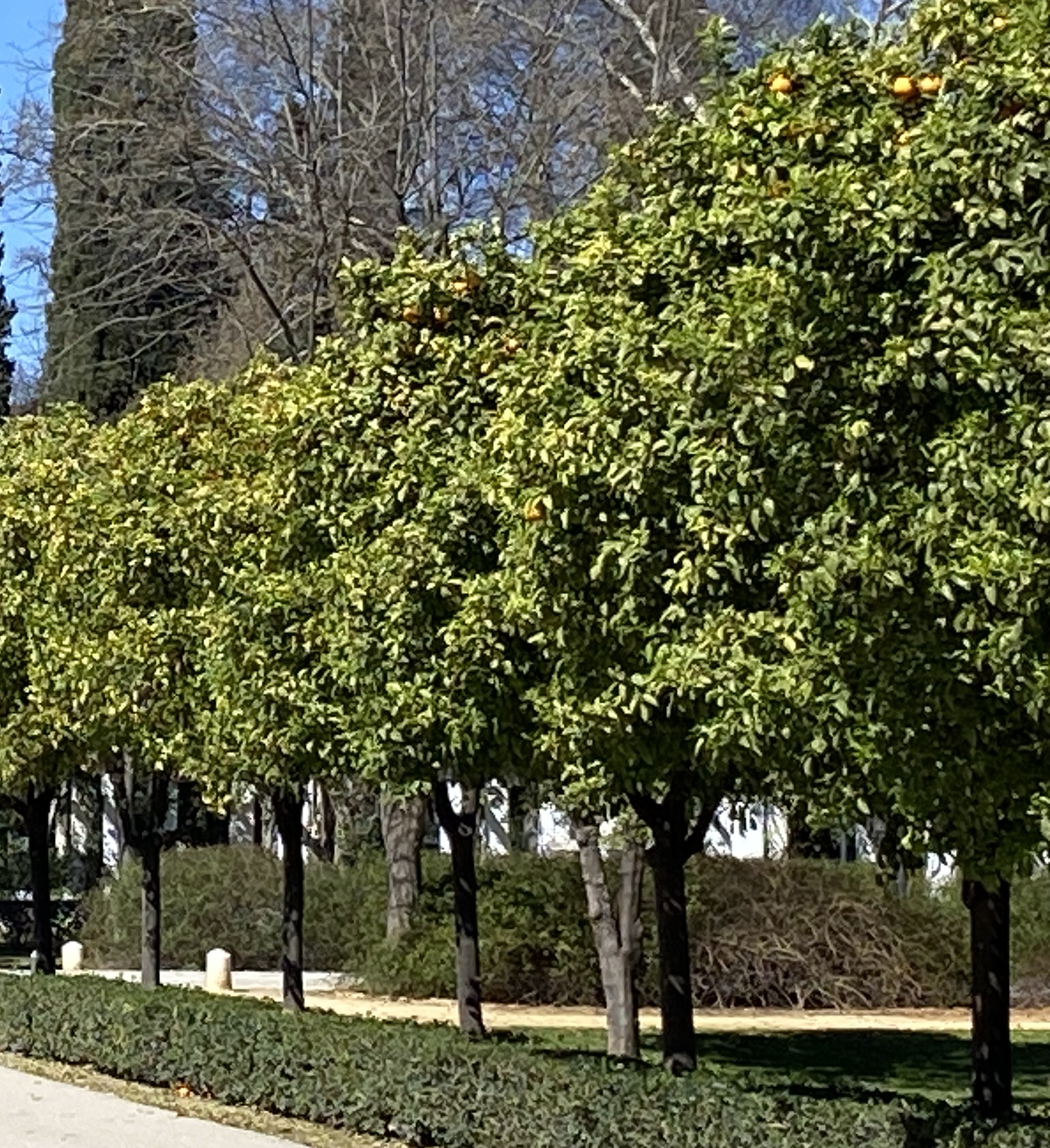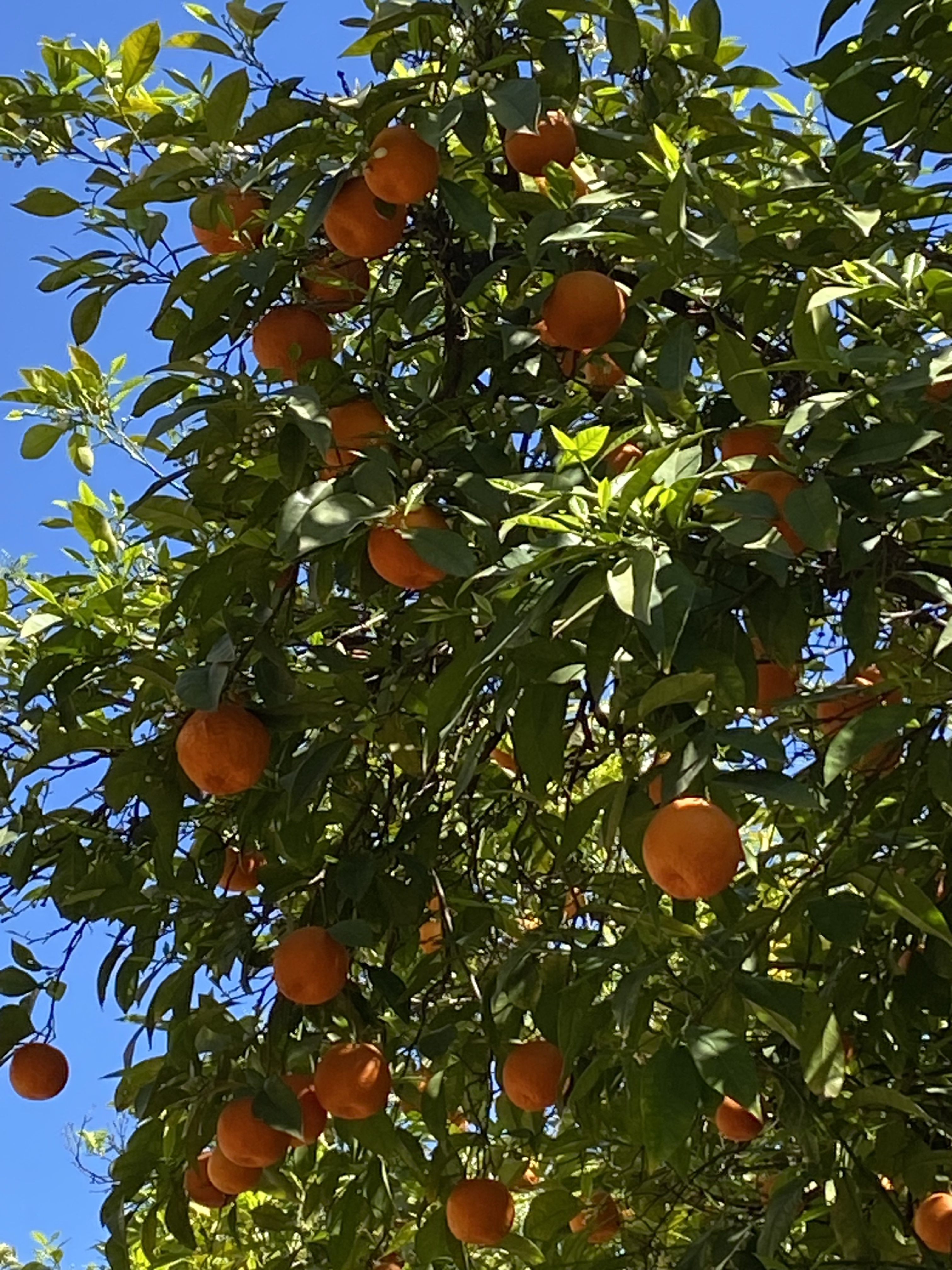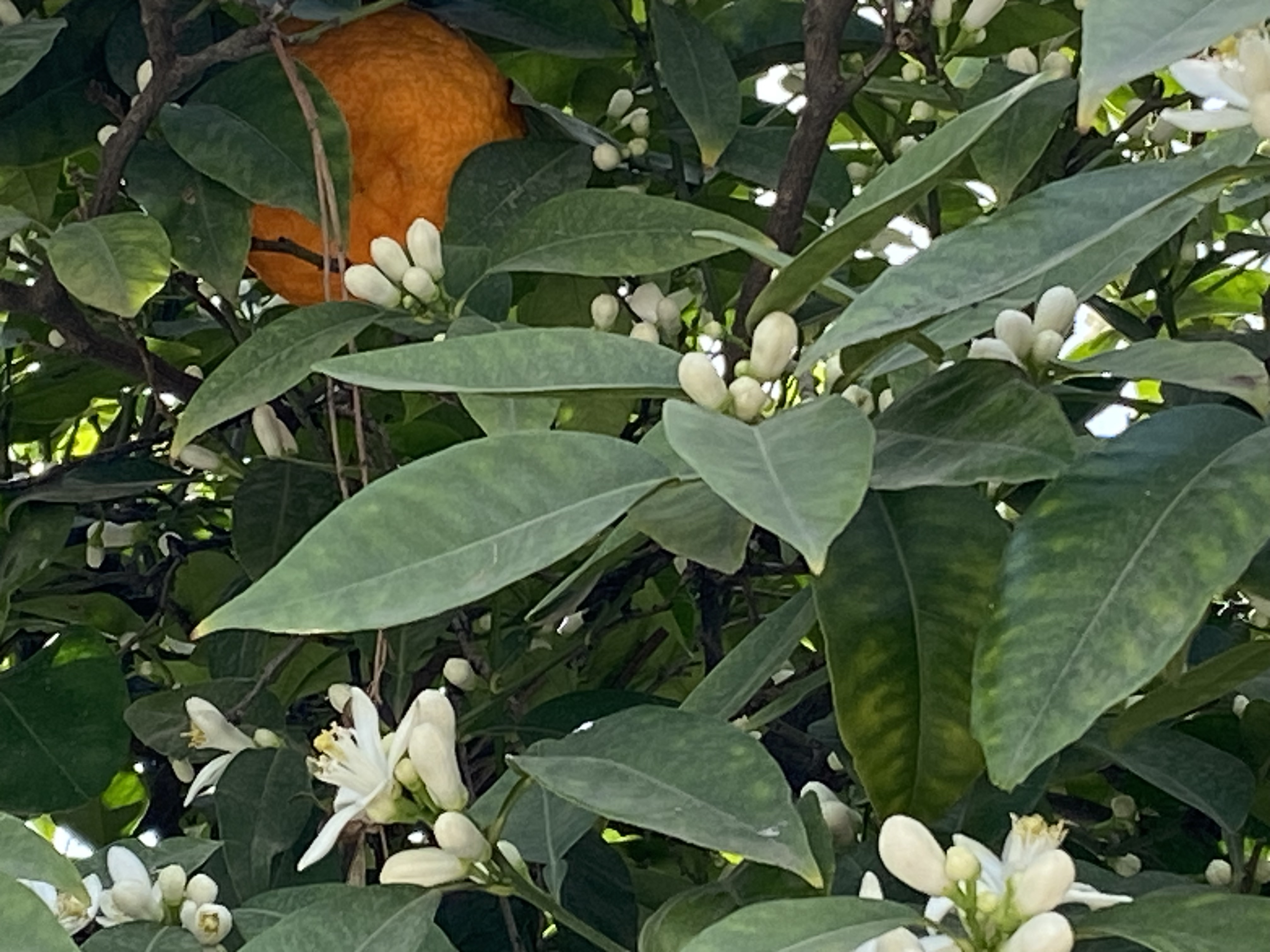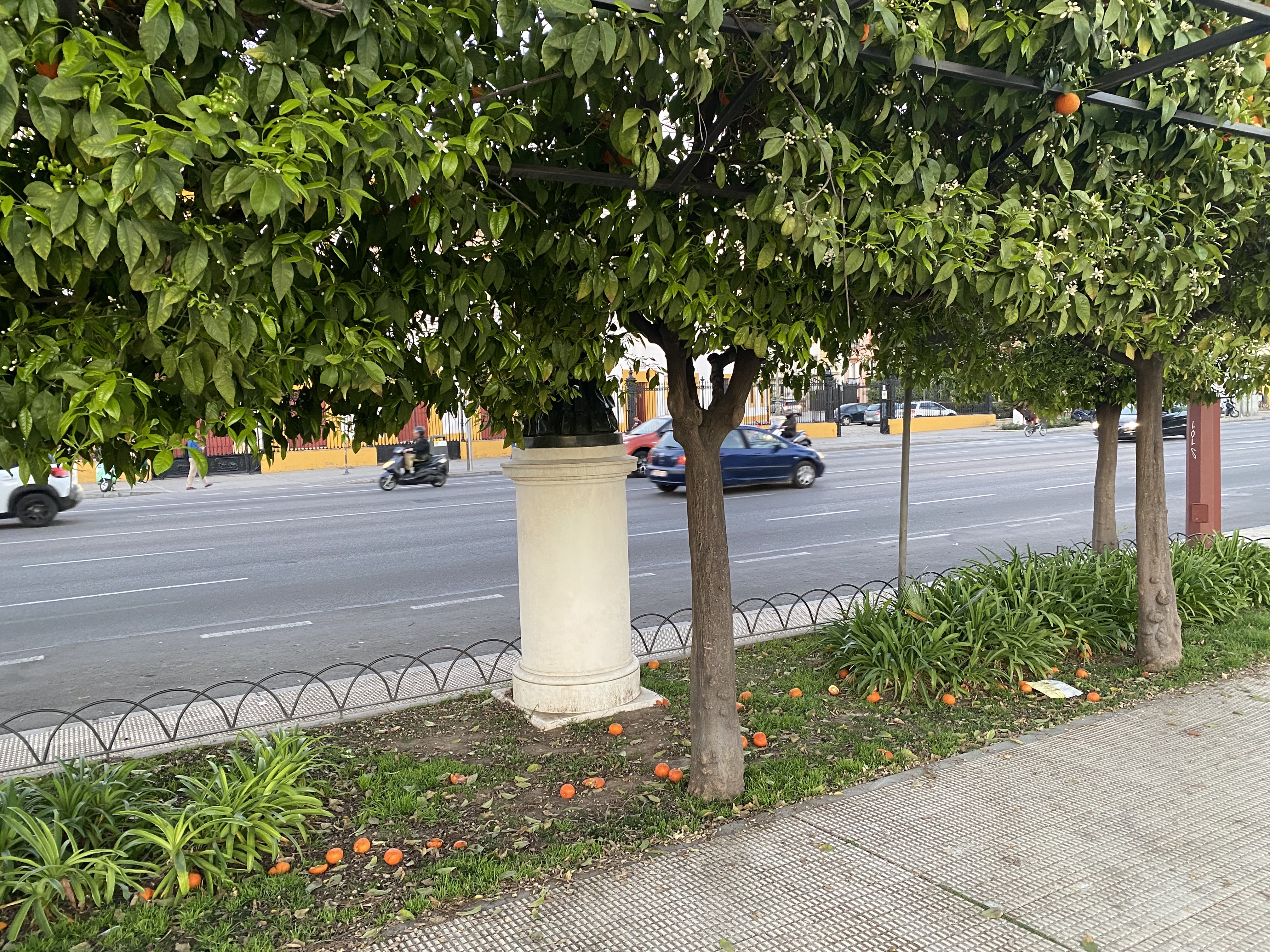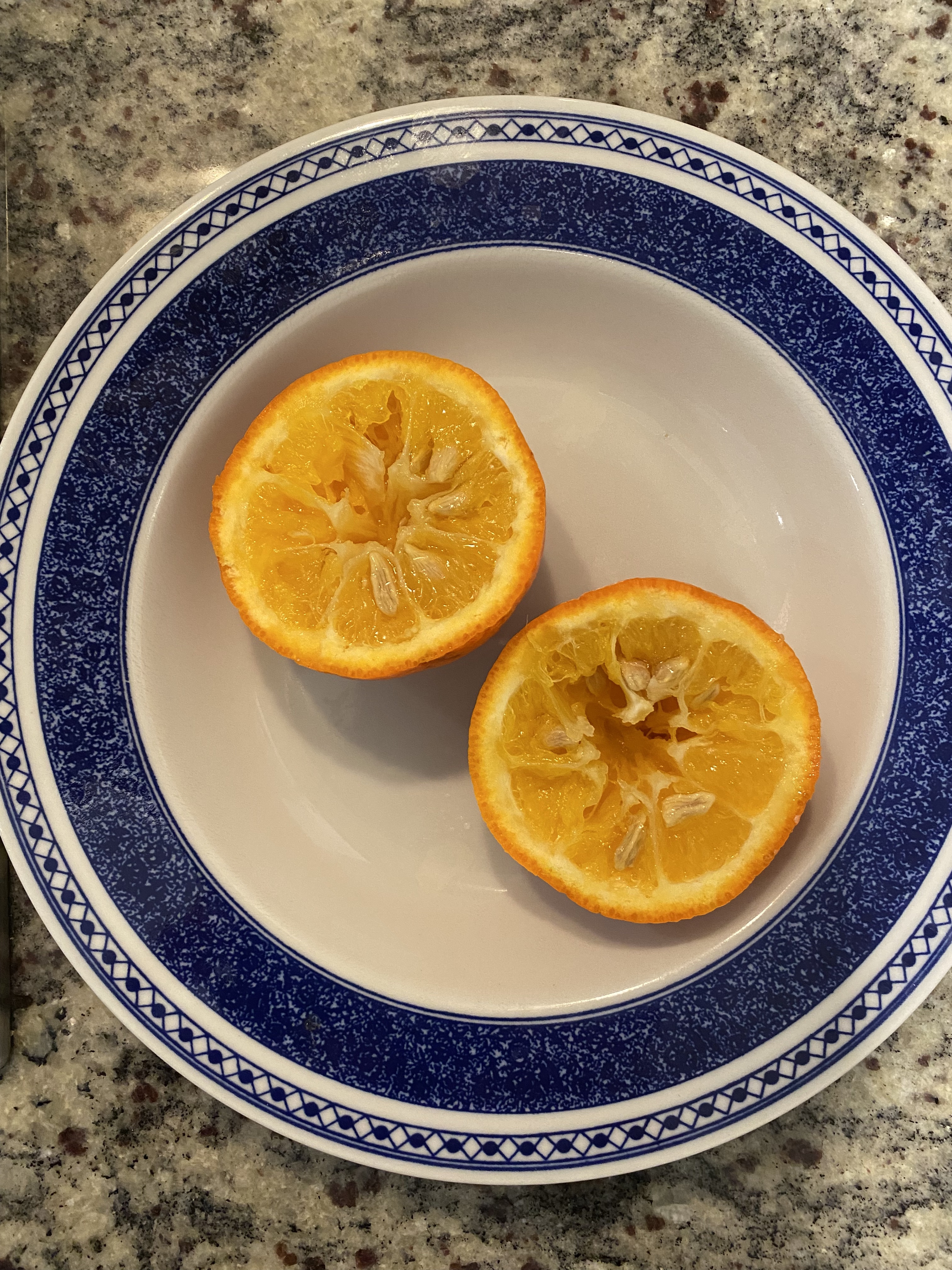|
Today's Opinions, Tomorrow's Reality
Abundance and Scarcity By David G. Young Seville, Spain, March 21, 2023 -- Seville's overabundance of oranges offers dangers and opportunities alike. Walking in this Andalusian city, one of the first things that strikes you is the sight of thousands of beautiful orange trees lining the streets. Impossibly small openings in the pavement, often just one square meter, somehow sprout healthy trees five meters high studded with plump orange fruit.
In March the trees erupt with white blossoms that perfume the air with their delicate scent and send tiny petals raining down on patrons of sidewalk cafes. But pedals are not the only thing that rain down. The half-kilo fruits sometimes rain down too, and are apt to strike you on the head if you are unlucky.
A more common hazard is to step on a fallen fruit crushing it to release its slippery pulp and juices and send you skidding down the sidewalk. The fallen fruit collect around trees until city workers with tiny vacuum trucks suck them up and take them away. But while they litter the ground the oranges offer a chance for a game of fetch by dogs in the park, or an impromptu stand-in to finish young boys' match when their football has deflated. They can even serve as a semi-credible weapon for threatening your older brother. What locals do not do is eat them. The citrus variety is known as bitter orange due to its extremely sour flavor and bitter aftertaste. Native to Southeast Asia, ancient trade routes probably brought them to the Roman Empire in classical times where they became popular as ornamental trees. The colonizing Arabs later brought them to southern Spain. The Spanish then spread the trees to Mexico and Caribbean where the acidic fruit juice is used as a marinade for pork in the famous Cuban Lechon and to pickle onions in Yucatecan Cohinita Pibil. The English later got their hands on them and combined with ubiquitous sugar form the colonial era to make orange marmalade. While sugar, corn and potatoes get much of the attention in the Columbian exchange, Seville oranges offer little more than a footnote. Unlike in Latin America, Sevilla oranges are rarely on the menu in Andalusia. Sampling them is easiest with your own kitchen, and even then compromises have to be made.
When cooking Cuban Lechon Asado in the United States, Seville Oranges are not to be found. The author substitutes two parts Apple cider vinegar and one part sweet orange juice. But things aren’t straightforward in Seville either. While the bitter oranges are ubiquitous, new world cuts like Boston butt or pork shoulder, often used in lechon recipes, are harder to find. Spain’s popular pork cheek is a nice alternative. If necessity is the mother of invention, the juxtaposition of abundance with scarcity is the driver of culinary evolution. |


